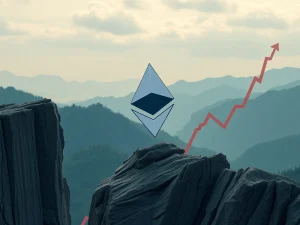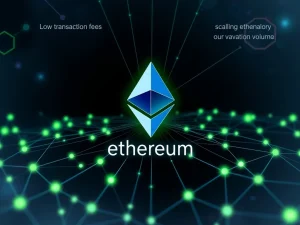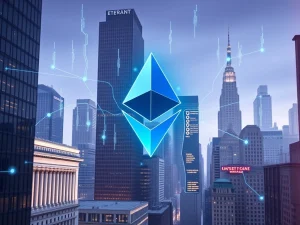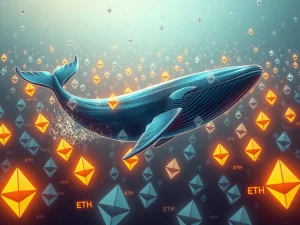Solana’s STUNNING Staking Surge: Has it Really Flipped Ethereum?
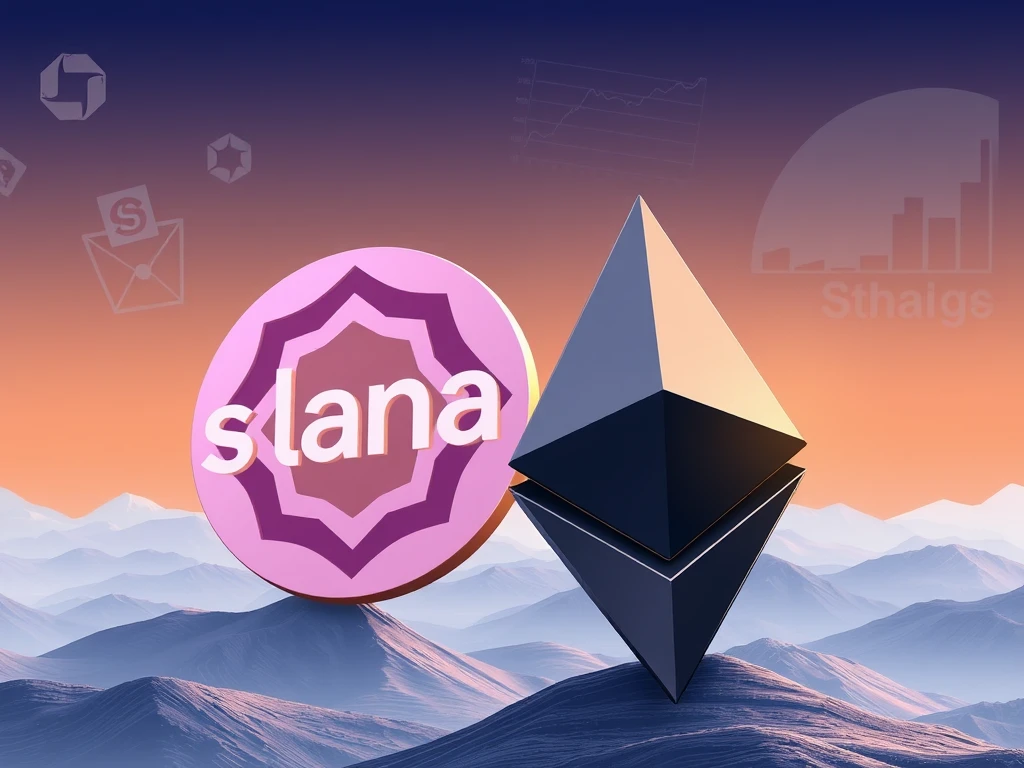
The cryptocurrency world is buzzing with debate as Solana (SOL) momentarily surpassed Ethereum (ETH) in the total value of staked tokens. For a fleeting moment on April 20th, the staked value of SOL on the Solana network edged past that of ETH on Ethereum. This unexpected event has ignited discussions across the crypto community: Is this a bullish milestone signaling Solana’s ascent, or does it reveal underlying weaknesses within the Solana ecosystem? Let’s dive into this fascinating development and unpack the arguments from both sides.
Decoding the Staking Market Cap Flip: Solana vs. Ethereum
Recent data reveals that over $53.9 billion worth of SOL is currently staked on the Solana network, distributed across 505,938 unique wallets. These stakers are enjoying an attractive 8.31% annualized return. This figure briefly exceeded Ethereum’s staked ETH market cap, which currently stands at $53.93 billion, secured by 34.7 million staked tokens, according to Beaconcha.in data. The near-parity in staking market cap between Solana and Ethereum is noteworthy, especially considering Ethereum’s established dominance in the crypto space.
Several factors contributed to this intriguing ‘flippening’. Notably, Solana’s price performance against Ethereum over the past two years has been remarkable. The SOL/ETH price ratio has surged nearly tenfold, climbing from 0.0088 to 0.0866 since June 12, 2023, CoinGecko data indicates. This significant price appreciation of SOL has naturally boosted its staked market cap in dollar terms.
Here’s a quick comparison of key staking metrics:
| Metric | Solana (SOL) | Ethereum (ETH) |
|---|---|---|
| Staked Value | $53.9 Billion | $53.93 Billion |
| Annualized Staking Return | 8.31% | 2.98% |
| Unique Wallet Holders (Staking) | 505,938 | N/A |
| Staked Tokens | N/A | 34.7 Million |
Is High Solana Staking Yield a Blessing or a Curse for DeFi?
While a higher cryptocurrency staking yield might seem inherently positive, some industry observers argue that Solana’s impressive 8.31% staking return could be inadvertently hindering the growth of its DeFi (Decentralized Finance) ecosystem. This ‘risk-free’ return, significantly higher than Ethereum’s 2.98%, might be incentivizing Solana users to stake their tokens rather than engage in DeFi activities.
“Solana having 65% of its marketcap staked means there’s no other use of it’s token, it’s actually bearish,” commented “JC,” a developer at Builda Protocol, on X. This perspective suggests that a large proportion of staked SOL indicates a lack of diverse utility for the token beyond staking.
Data from DefiLlama supports this concern. Ethereum boasts a substantial $21.5 billion in liquid staked ETH tokens, whereas Solana lags behind with only $7.22 billion in liquid staked SOL. Liquid staking is crucial for DeFi participation as it allows users to earn staking rewards while simultaneously using their staked assets in DeFi protocols.
Tushar Jain, Managing Partner at Multicoin Capital, previously highlighted this issue, stating that Solana DeFi is being stifled because the high staking yield makes DeFi participation less attractive. “It doesn’t make sense for you to provide liquidity on a SOL/USDC AMM when that might earn you 5% but staking earns you 7%,” Jain explained, pointing out the disincentive to engage in activities like providing liquidity to Automated Market Makers (AMMs) when staking offers a superior, seemingly risk-free return.
Furthermore, Ethereum continues to dominate in terms of overall DeFi Total Value Locked (TVL), holding $50.4 billion compared to Solana’s $8.85 billion. This significant gap underscores Ethereum’s established position as the leading platform for DeFi innovation and activity.
Validator Count and Network Security: Ethereum’s Edge
Another key point of comparison lies in the number of validators securing each network. Ethereum’s network is secured by a far greater number of validators – a staggering 1.06 million – compared to Solana’s 1,243. A larger validator set is generally considered to enhance network security and decentralization.
Is Solana Staking ‘Real’ Staking? The Slashing Debate
Adding fuel to the debate, Ethereum researcher Dankrad Feist argues that Solana’s staking mechanism isn’t truly “staking” in the traditional sense because it lacks automatic slashing – a penalty mechanism for validators who engage in malicious behavior or network disruptions. “It’s very ironic to call it ‘staking’ when there is no slashing. What’s at stake?” Feist questioned in an April 20 X post. He further asserted, “Solana has close to zero economic security at the moment.”
While Solana Labs acknowledges that slashing is possible, it’s not an automatic process. Currently, penalizing malicious actors requires restarting the entire network. However, Solana is actively working on implementing a more robust slashing solution, with plans to roll it out later this year, according to Kyle Samani of Multicoin Capital.
Solana Labs CEO Anatoly Yakovenko is advocating for a “correlated slashing” mechanism. This proposed system would calculate penalties based on the square of the difference between a validator’s faulty stake and the median network staked validator, aiming for a more nuanced and effective approach to penalizing misbehavior.
Ethereum’s Path to Decentralized Staking
Meanwhile, Ethereum developers and researchers are focused on further decentralizing Ethereum staking. The high barrier to entry for becoming an independent Ethereum validator – requiring 32 ETH (currently around $50,750) – has driven many stakers towards liquid staking protocols. While liquid staking has made staking more accessible, it has also led to concerns about centralization, with Lido protocol currently dominating Ethereum’s liquid staking market with an 88% share.
Conclusion: A Milestone and a Moment for Reflection
Solana’s brief overtake of Ethereum in staked market cap is undoubtedly a significant milestone, highlighting Solana’s growing prominence and the strong performance of SOL. However, the ensuing debate reveals that this ‘flippening’ is not simply a straightforward bullish signal. The discussion around staking yields, DeFi activity, network security, and validator decentralization underscores the complexities and nuances within each ecosystem.
While Solana boasts impressive staking participation and a rapidly evolving network, Ethereum retains its leadership in DeFi TVL, validator count, and a more established, albeit evolving, staking infrastructure. The crypto community will be keenly watching how both networks address these challenges and opportunities as they continue to innovate and compete in the ever-dynamic landscape of blockchain technology. This event serves as a powerful reminder that market cap figures are just one piece of the puzzle, and a deeper analysis of underlying ecosystem health and functionality is crucial for understanding the true potential of any cryptocurrency.

